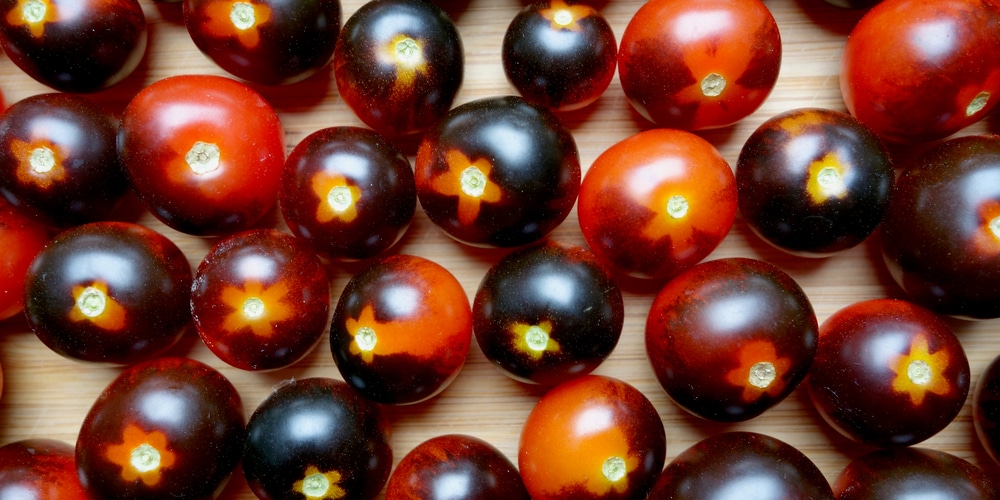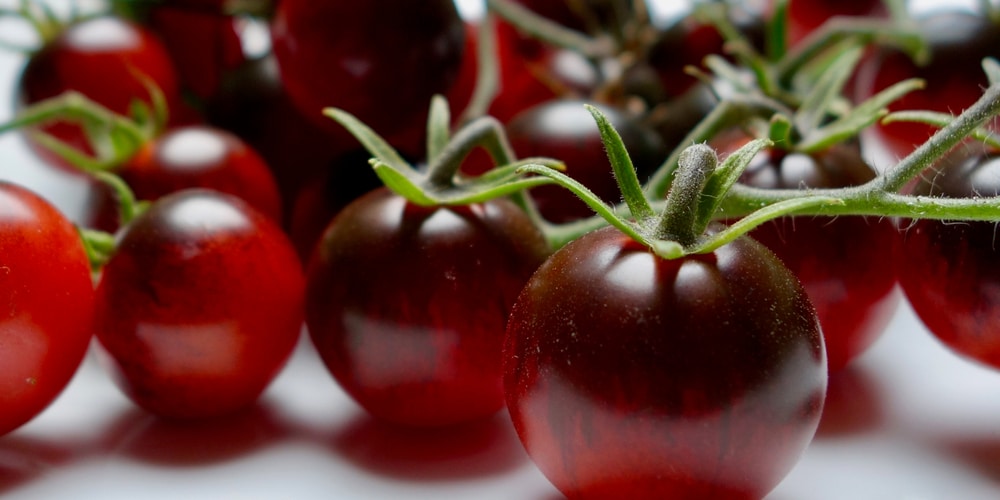Among the different varieties of tomatoes, the midnight snack cherry tomato is one of the most unique. With a deep shade of red, almost burgundy, it’s the perfect size for popping into your mouth, hence the name.
And while that might make it seem like an odd choice for a garden tomato, the flavor more than makes up for it. Its sweetness is intensified by its low acidity and dense flesh. The firm flesh has just the right amount of give, and its skin is thin but not delicate.
What You Need to Know About Midnight Snack Cherry Tomato

When you bite into a Midnight Snack, the flavors explode in your mouth like a miniature fireworks display. First comes the sweetness, followed by a hint of acidity and then a sharp burst of flavor that can only be described as pure tomato-ness.
As for its foliage, the leaves of the Midnight Snack cherry tomato plant are a deep, glossy green. The stems are also a deep green, but they have a purple hue to them. The flowers are a beautiful white with yellow centers.
The fruit of the Midnight Snack cherry tomato is, of course, its namesake dark red color. Each fruit is about the size of a large cherry and has about 10-12 seeds.
The plant itself is an indeterminate type, growing on approximately 6 vines. LIke other indeterminate varieties, it will continue to produce fruit until the first frost of the season. It requires staking or caging, as the fruit can get heavy and cause the branches to break.
How to Care for Midnight Snack Cherry Tomato
Here’s everything you need to know about growing and caring for a thriving midnight snack cherry tomato:
Light
Don’t underestimate its size – the midnight snack cherry tomato is a sun-worshipper. It needs at least 8 hours of sunlight per day, so choose a spot in your garden that gets plenty of sunshine.
Water and Soil Needs
This variety is fairly drought-tolerant, but it’s important to water regularly during the fruiting season. Water at the base of the plant, taking care not to wet the leaves. It requires moderate watering, about 1-2 inches per week. Evenly watering is key to preventing cracking and blossom end rot.
The ideal soil for midnight snack cherry tomato is sandy loam which is well-draining. The recommended soil pH for this plant to grow and do its best is within 5.5 to 7 pH.
Temperature Requirements
This sunshine-loving tomato variety does well in USDA zone 11. It loves the heat and doesn’t mind temperatures that are a bit on the high side. Just mind the afternoon sun in hot climates – too much sun can cause the leaves to burn.
Fertilizer
The best fertilizer to use on midnight snack cherry tomato is a timed-release, all-purpose fertilizer. It also significantly benefits from compost or other organic matter being worked into the soil. Apply fertilizer once a month during the growing season.
Common Diseases
Aphids are mostly found on the underside of leaves and can cause stunted growth. They can be controlled with a strong stream of water or by using insecticidal soap.
Tomato blight is another disease that can affect your midnight snack cherry tomato plants. It’s characterized by dark, leathery spots on the leaves and fruit. Remove any affected leaves and destroy them. If the plant is severely affected, it’s best to remove it and destroy it to prevent the disease from spreading.
You may also need to protect your tomatoes from birds and insect infestation.
Midnight Snack Cherry Tomato Propagation
The most effective and easiest way to propagate midnight snack cherry tomato is by using root suckers. In fact, gardeners often mention that this is better and easier than propagating from seeds.
When the plant’s stems are cut, small root suckers will sprout from the cut end. These root suckers can then be planted in a pot or in the garden, and they will grow into new plants.
To propagate from root suckers, simply cut a stem that has root suckers and plant it in a pot or in the ground. Water regularly and provide plenty of sunlight. In a few weeks, you’ll have new plants ready to be transplanted or planted in the garden.
If you decide to propagate by seed, it’s always best to start indoors during the late winter or early spring. Sow the seeds in a sterile potting mix and keep the soil moist but not soggy. When the tomatoes reach around 4-6 inches tall, and when all danger of frost has passed, they can be transplanted outdoors.

